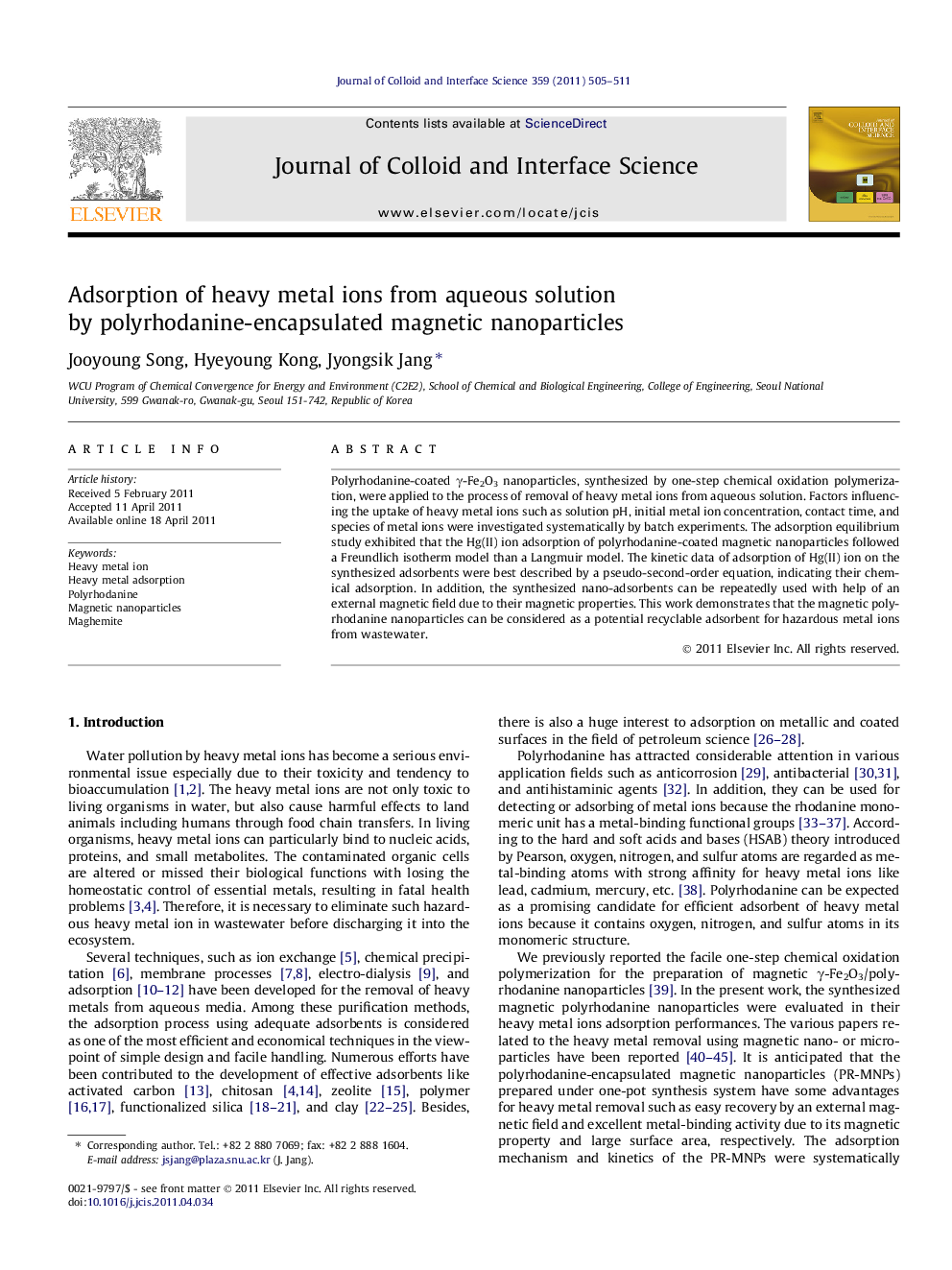| Article ID | Journal | Published Year | Pages | File Type |
|---|---|---|---|---|
| 608687 | Journal of Colloid and Interface Science | 2011 | 7 Pages |
Polyrhodanine-coated γ-Fe2O3 nanoparticles, synthesized by one-step chemical oxidation polymerization, were applied to the process of removal of heavy metal ions from aqueous solution. Factors influencing the uptake of heavy metal ions such as solution pH, initial metal ion concentration, contact time, and species of metal ions were investigated systematically by batch experiments. The adsorption equilibrium study exhibited that the Hg(II) ion adsorption of polyrhodanine-coated magnetic nanoparticles followed a Freundlich isotherm model than a Langmuir model. The kinetic data of adsorption of Hg(II) ion on the synthesized adsorbents were best described by a pseudo-second-order equation, indicating their chemical adsorption. In addition, the synthesized nano-adsorbents can be repeatedly used with help of an external magnetic field due to their magnetic properties. This work demonstrates that the magnetic polyrhodanine nanoparticles can be considered as a potential recyclable adsorbent for hazardous metal ions from wastewater.
Graphical abstractThe polyrhodanine/maghemite nanoparticles exhibited recyclable heavy metal adsorption performances.Figure optionsDownload full-size imageDownload high-quality image (164 K)Download as PowerPoint slideHighlights► The γ-Fe2O3/polyrhodanine nanoparticles were fabricated via one-step chemical oxidation polymerization. ► The magnetic polyrhodanine nanoparticles exhibit heavy metal adsorption property. ► Initial concentration, pH value, and contact time affect the adsorption capacity. ► The fabricated nanoparticles show recyclable metal adsorption performance.
